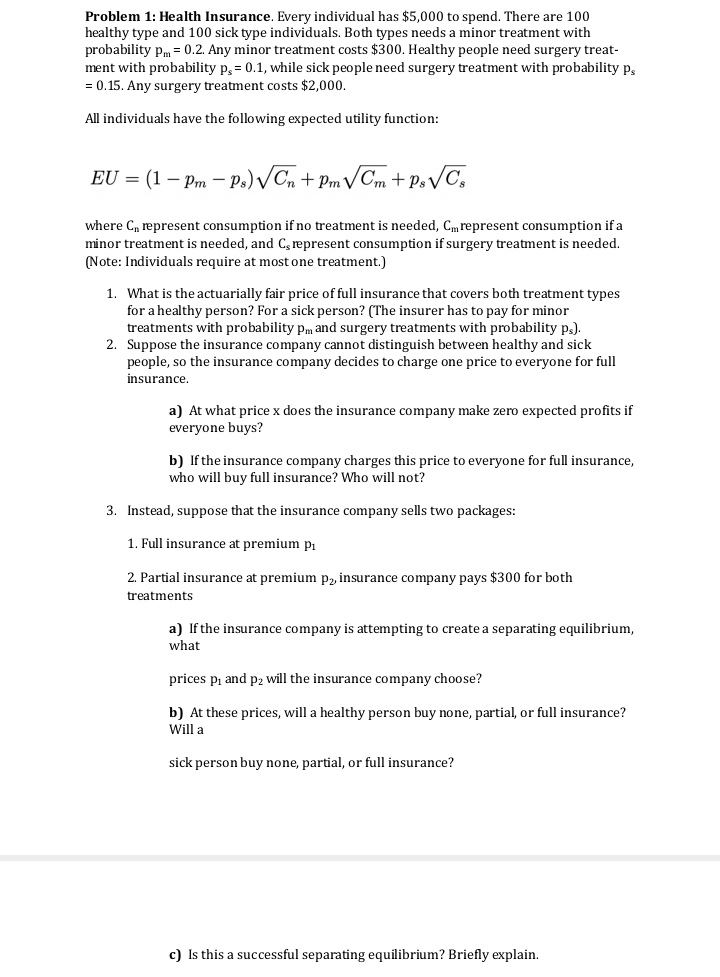Answered step by step
Verified Expert Solution
Question
1 Approved Answer
Economics Question Problem 1: Health Insurance. Every individual has $5,000 to spend. There are 100 healthy type and 100 sick type individuals. Both types needs
Economics Question

Step by Step Solution
There are 3 Steps involved in it
Step: 1

Get Instant Access to Expert-Tailored Solutions
See step-by-step solutions with expert insights and AI powered tools for academic success
Step: 2

Step: 3

Ace Your Homework with AI
Get the answers you need in no time with our AI-driven, step-by-step assistance
Get Started


